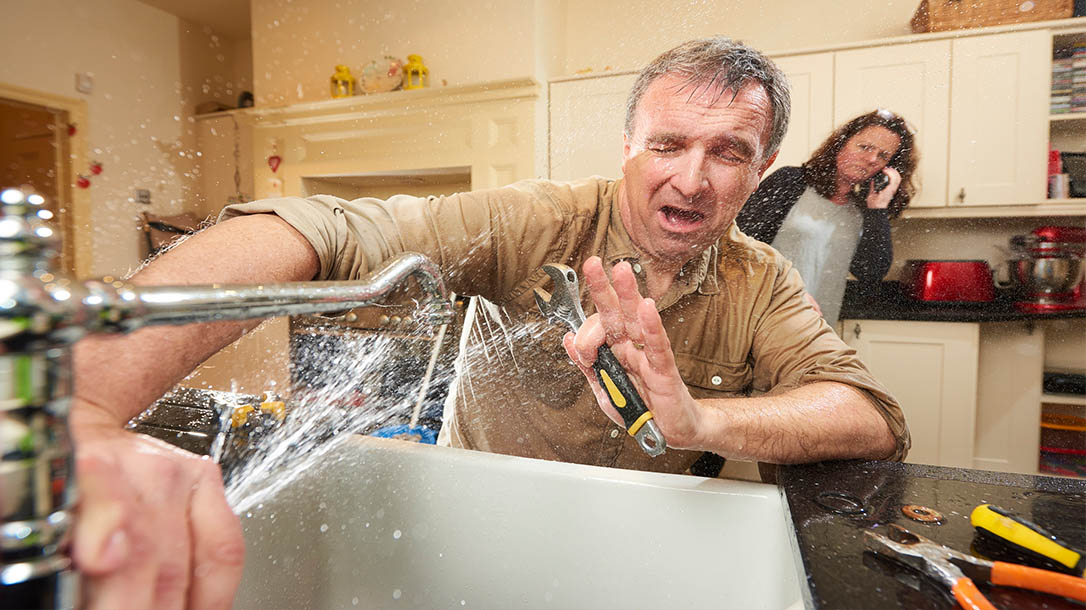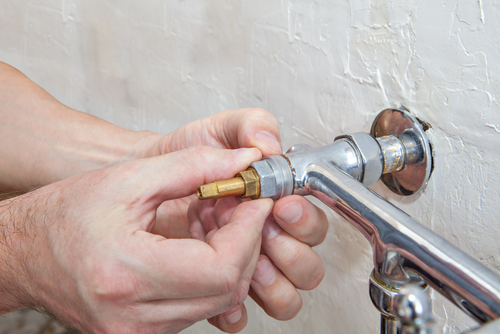How It's Essential to Resolve a Faulty Faucet
How It's Essential to Resolve a Faulty Faucet
Blog Article
Everybody maintains their unique idea involving Leaky Faucets: Why They Happen & What to Do About Them.

Dripping faucets could seem like a minor trouble, yet their impact goes beyond just the annoyance of the noise. From wasting water to sustaining unneeded economic prices and health risks, disregarding a leaking faucet can cause different repercussions. In this post, we'll delve into why it's crucial to address this usual house concern immediately and successfully.
Waste of Water
Environmental Impact
Dripping taps contribute substantially to water wastage. According to the Epa (EPA), a solitary faucet trickling at one drip per second can throw away more than 3,000 gallons of water each year. This not only pressures water resources yet also impacts communities and wild animals dependent on them.
Step-by-Step Guide to Dealing With a Dripping Faucet
Devices Required
Before trying to deal with a dripping faucet, collect the essential tools, including an adjustable wrench, screwdrivers, substitute components (such as washing machines or cartridges), and plumber's tape.
Common Faucet Issues and Their Solutions
Identify the kind of faucet and the certain concern creating the drip. Usual troubles consist of damaged washers, rusty shutoff seats, or damaged O-rings. Describe producer instructions or online tutorials for detailed guidance on repair services.
Financial Prices
Raised Water Bills
Past the ecological influence, trickling taps can inflate water bills significantly. The built up wastage over time translates right into higher utility expenditures, which might have been prevented with timely repair work.
Possible Residential Or Commercial Property Damages
Additionally, prolonged trickling can cause damage to components and surfaces bordering the faucet. Water buildup can trigger discoloration, corrosion, and also structural concerns if left unattended, causing additional repair work prices.
Health Problems
Mold and Mold Development
The constant presence of wetness from a trickling tap produces a suitable atmosphere for mold and mold growth. These fungi not just endanger interior air top quality but also position health and wellness dangers, especially for people with breathing problems or allergic reactions.
Waterborne Illness
Stagnant water in leaking faucets can become a breeding ground for microorganisms and various other microorganisms, enhancing the risk of waterborne diseases. Impurities such as Legionella germs flourish in stagnant water, possibly leading to significant health problems when ingested or breathed in.
DIY vs. Professional Fixing
Benefits and drawbacks of DIY Fixing
While some may try to repair a trickling faucet themselves, do it yourself repairs include their own collection of challenges. Without appropriate expertise and tools, do it yourself efforts can exacerbate the problem or bring about incomplete repair work, extending the trouble.
Benefits of Hiring an Expert Plumber
Employing a specialist plumber ensures that the underlying reason for the leaking tap is addressed efficiently. Plumbing professionals have the proficiency and devices to identify and repair faucet concerns successfully, conserving time and decreasing the threat of more damages.
Environmental Obligation
Individual Contribution to Conservation
Taking responsibility for fixing trickling taps lines up with broader efforts towards water preservation and ecological sustainability. Every person's activities jointly make a significant influence on maintaining precious sources.
Sustainable Living Practices
By focusing on prompt repairs and embracing water-saving practices, people contribute to lasting living methods that profit both present and future generations.
Safety nets
Routine Maintenance Tips
To prevent trickling faucets, do regular maintenance such as cleansing aerators, examining for leakages, and changing worn-out parts without delay. Additionally, consider setting up water-saving tools or updating to much more effective components.
Relevance of Prompt Repairs
Dealing with leaking taps as quickly as they're seen prevents further water wastage and prospective damage, eventually saving both water and money in the future.
Influence On Home Value
Understanding of Well-Maintained Home
Preserving a residential property in good condition, consisting of dealing with maintenance concerns like leaking faucets, enhances its regarded value and desirability amongst potential customers or renters.
Influence on Resale Worth
Residences with well-maintained plumbing components, including taps, command higher resale worths in the real estate market. Resolving leaking taps can contribute to a favorable impression throughout residential or commercial property examinations and arrangements.
Final thought
Resolving a leaking tap goes beyond simple convenience; it's a vital action toward saving water, minimizing economic costs, and protecting wellness and property. Whether through DIY repair work or expert help, doing something about it to fix dripping faucets is a small yet impactful way to advertise accountable stewardship of resources and add to a much healthier, more sustainable future.
How to Fix a Leaky Faucet: Step-by-Step Repair Guide
A leaky faucet may seem like a simple annoyance, but if it's not fixed promptly, that leak could cost hundreds to potentially thousands. From water damage to mold, mildew, and high water bills, even a tiny leak can be catastrophic if left unattended. Damage like this can even affect the overall value of your home, so it's important to take the right approach for leaky faucet repair. You may need the help of a plumber in some cases, but we've got a few tips you can try on how to fix a leaky faucet before calling the pros.
Four Faucet Types
When you're learning how to fix a leaky faucet, the first step is knowing what kind of faucet you're working with! There are four common types.
Cartridge Faucets
Cartridge faucets come in one- or two-handled varieties. In one-handled cartridge faucets, hot and cold water combines in a single cartridge. In the two-handled versions, hot and cold water are controlled separately and mixed in the faucet.
Ball Faucets
Ball faucets have a single lever you push up and down to adjust the pressure and rotate to change the temperature. A slotted metal ball controls the amount of water allowed into the spout.
Compression Washer Faucets
They're the oldest type of faucet, but they're still used in many homes — especially older ones. Compression faucets have two separate handles that, when turned, raise or lower the washer that seals a water valve. This valve stops water from flowing through the faucet when it is turned off.
Disc Faucets
Disc faucets rarely need to be repaired due to their maintenance-free design. The water flow is controlled by two discs — the upper one raises and lowers against a fixed lower disc, creating a watertight seal. If your disc faucet starts leaking, you may need to replace the seals or clean residue buildup from the inlets.
Fixing a Leaky Faucet
Step 1: Turn Off the Water
Whether you're learning how to fix a leaky bathtub faucet or how to fix a leaky kitchen faucet, always turn off the water supply to your working area when you're fixing a leak. The last thing you want is a flood added to your list of things to fix.
Look for the shutoff valves below your sink or around the tub and turn them clockwise to stop the water flow. If your faucet doesn't have shutoff valves, you may need to turn off the water for the whole house. Check to make sure it's off by turning the faucet on. If nothing comes out, you're ready to start the repair.
Step 2: Take Apart the Faucet
How you disassemble your faucet depends on the type of fixture you have. You can use a flathead screwdriver to remove the caps on top of the handle or handles for cartridge and compression faucets. Inside, you should see handle screws. Unscrew these with a screwdriver to remove the handle.
Disc- and ball-style faucets will typically have an inlet screw near the handle, and removing that will reveal the interior of the faucet.
Detach the Valve Stem
For cartridge- and compression-style faucets, you'll see the inner valve stem or cartridge once you remove the faucet handles. If you have a compression faucet, unscrew the brass valve stem. If you have a cartridge faucet, pull out the cartridge. If your cartridge has been in place for a while, it may require some tools or extra force to remove it due to mineral deposits.
Examine and Replace Parts
Once you've removed the parts, check them out to confirm what needs to be replaced. You may see corroded rubber washers, O-rings, stems, or cartridges. On a ball-style faucet, check the seats and springs for damage.
If you need to repair a leaky disc faucet, check the inlet and seals on the lower disc.
Once you determine what parts must be replaced, visit your local hardware store. Bring the damaged parts with you to ensure you can purchase the correct components to replace them.
Clean Valves and Faucet Cavity
If you've removed a stem or cartridge, you may notice mineral buildup in the faucet's threads. Use white vinegar to clean the valve seat by soaking it for a few minutes, then scrub it away with a soft toothbrush and rinse with warm water. You can also clean the interior of the faucet in the same way.
Reassemble the Faucet
Once your faucet is cleaned and the required parts have been replaced, it's time to reassemble it. Put the pieces back together and slowly turn the water supply back on. Doing this slowly is crucial because too much initial water pressure can damage the new hardware you've just installed.
https://homewarranty.firstam.com/blog/how-to-fix-leaky-faucet

Hopefully you enjoyed reading our topic on What Causes Leaky Faucets & How To Fix Them. Thank you so much for taking a few minutes to read through our blog. Liked our article? Please share it. Let someone else check it out. I recognize the value of your readership.
Report this page